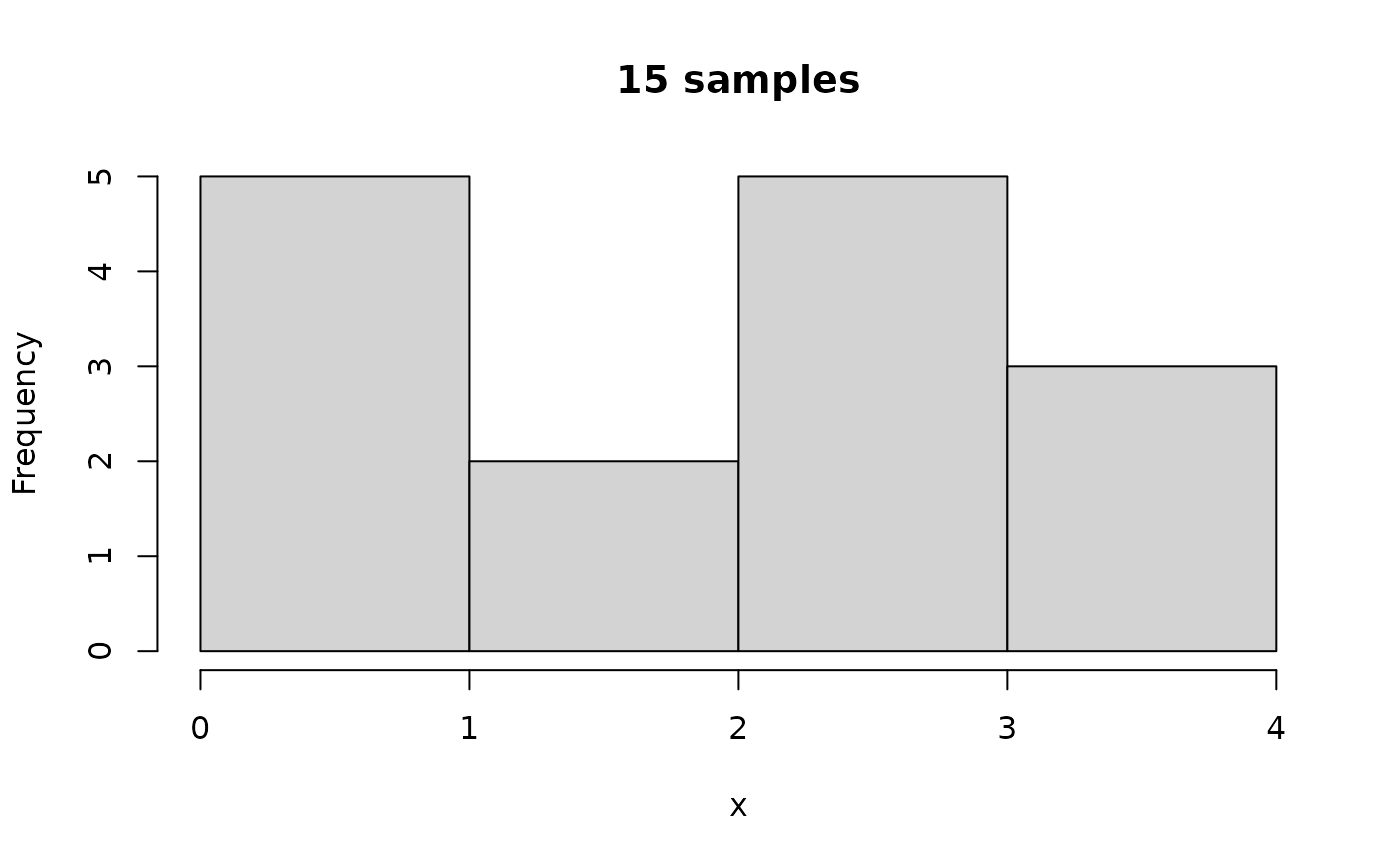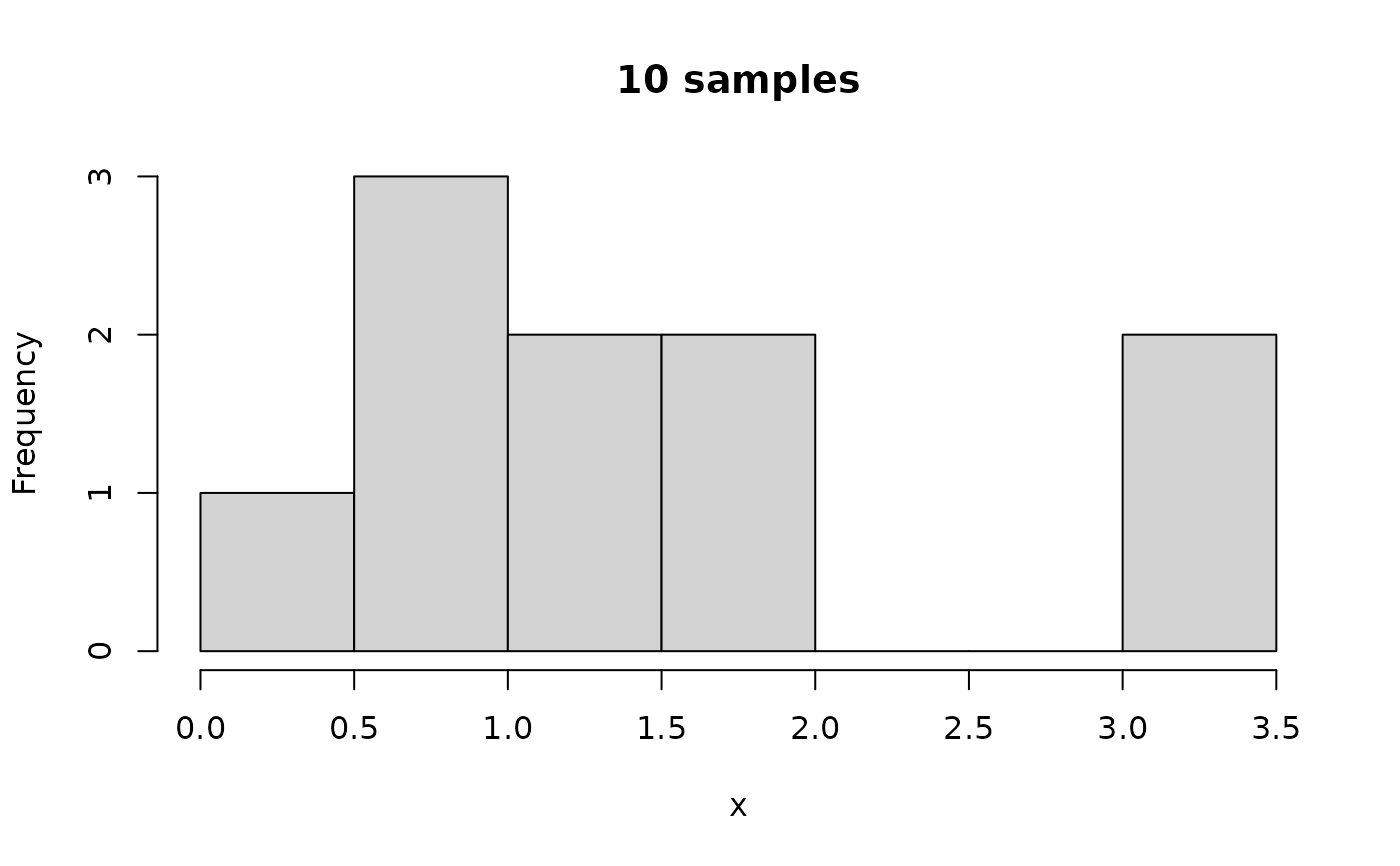Simulates events in the interval from to to based on a Poisson point process with rate rate. If the parameter n is used, the number of fossils is conditioned to be n
In the context of paleontology, these events can be interpreted as fossil occurrences or first/last occurrences of species. In this case, the rate is the average number of fossil occurrences (resp first/last occurrences) per unit
See also
p3_var_rate() for the variable rate implementation
Examples
# for fossil occ.
x = p3(rate = 5, from = 0, to = 1) # 5 fossil occurrences per myr on avg.
hist(x, xlab = "Time (Myr)", ylab = "Fossil Occurrences" )
 x = p3(rate = 3, from = 0, to = 4)
hist(x, main = paste0(length(x), " samples")) # no of events is random
x = p3(rate = 3, from = 0, to = 4)
hist(x, main = paste0(length(x), " samples")) # no of events is random
 x = p3(rate = 3, from = 0, to = 4, n = 10)
hist(x, main = paste0(length(x), " samples")) # no of events is fixed to n
x = p3(rate = 3, from = 0, to = 4, n = 10)
hist(x, main = paste0(length(x), " samples")) # no of events is fixed to n
 # see also
#vignette("event_data")
# for details on usage and applications to paleontology
# see also
#vignette("event_data")
# for details on usage and applications to paleontology